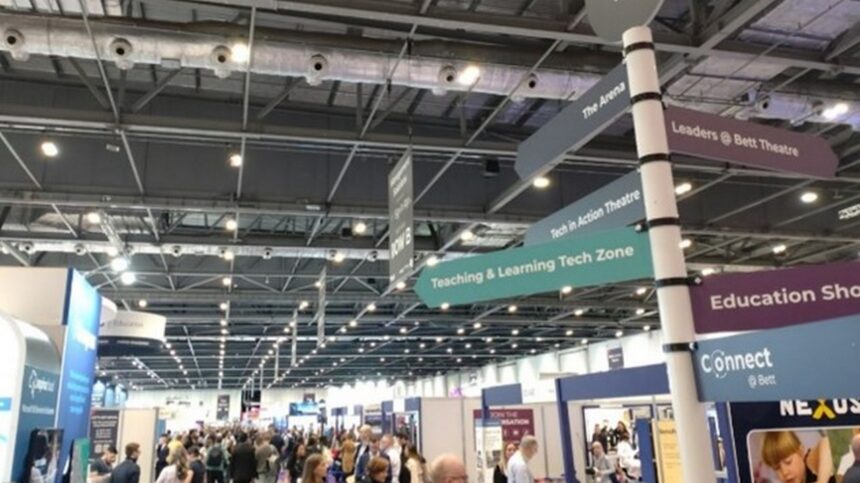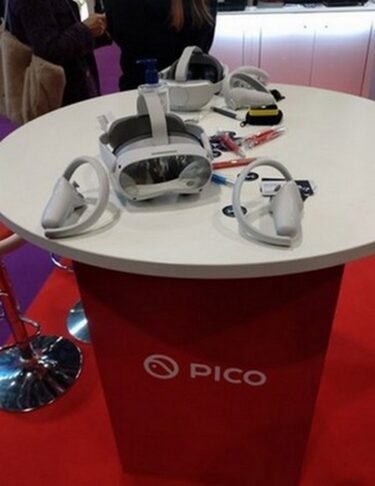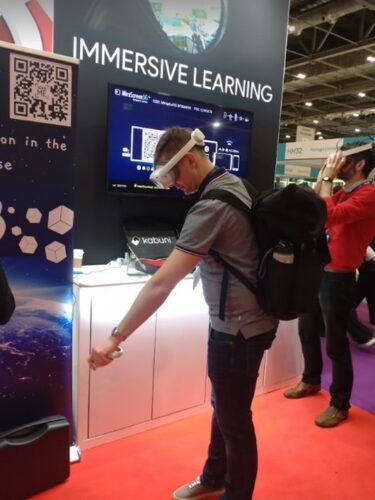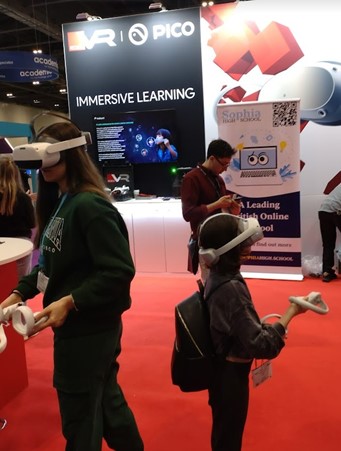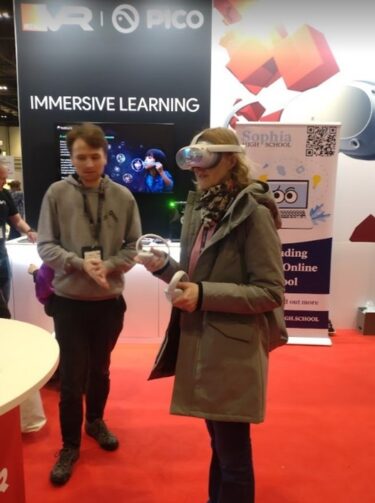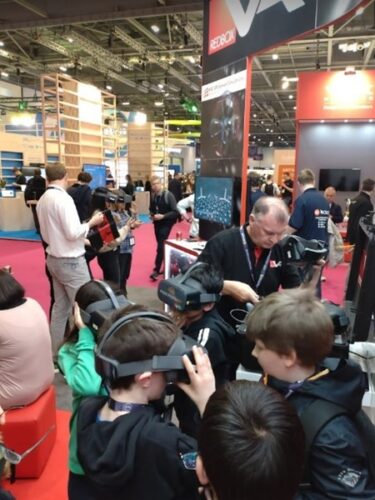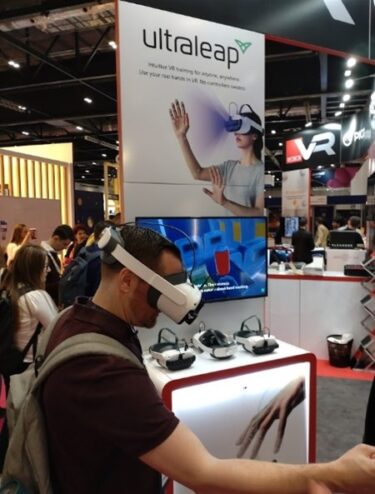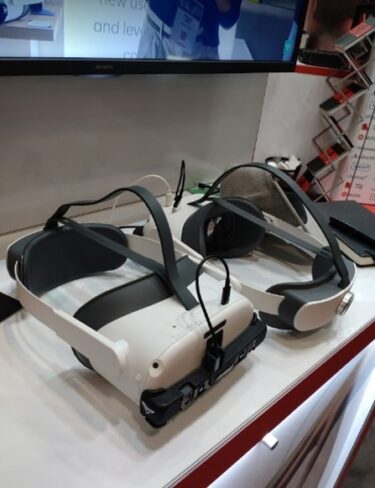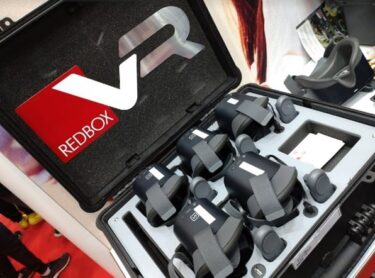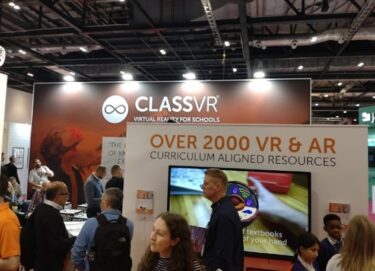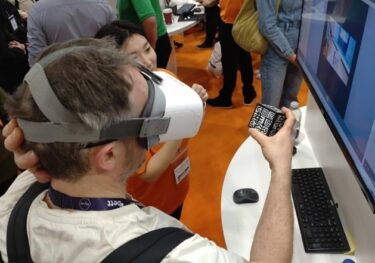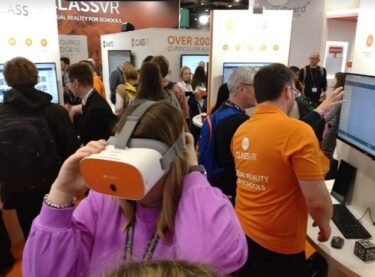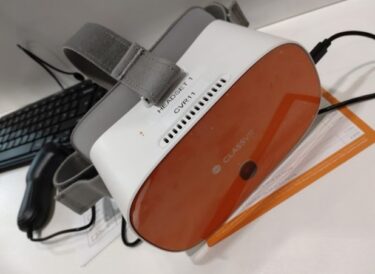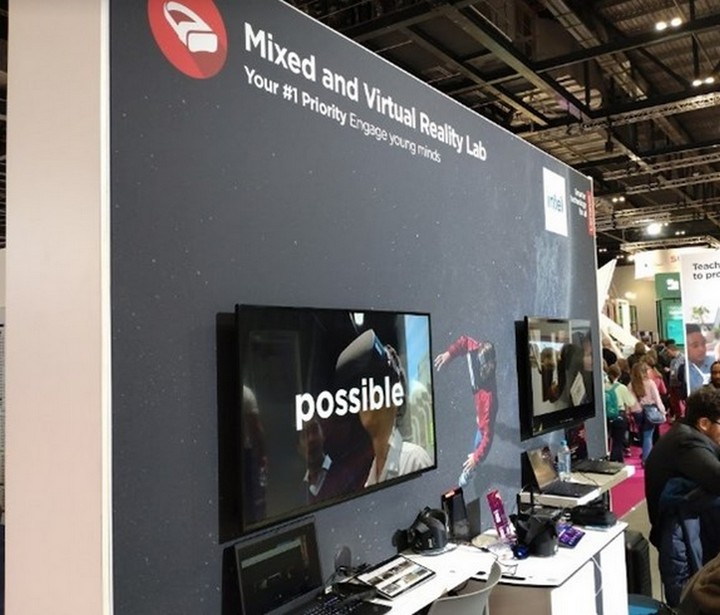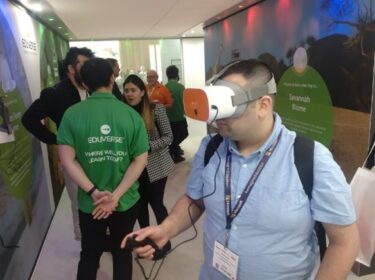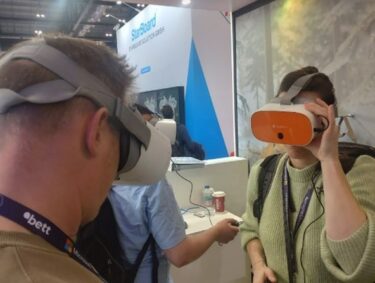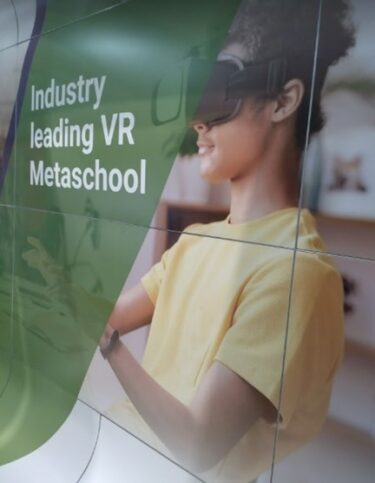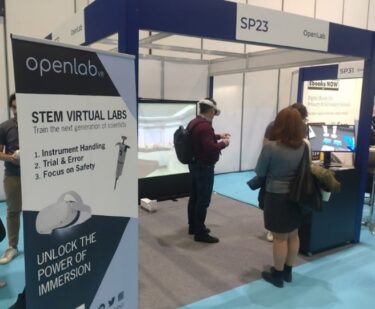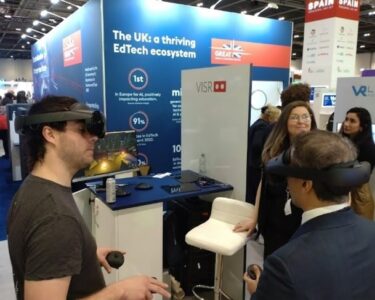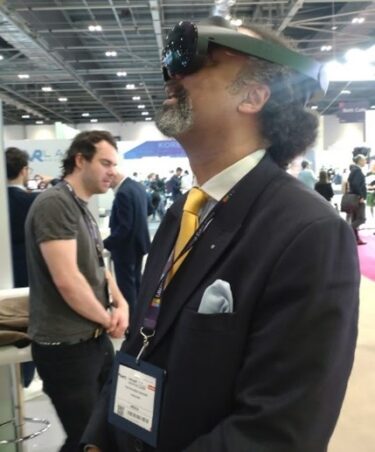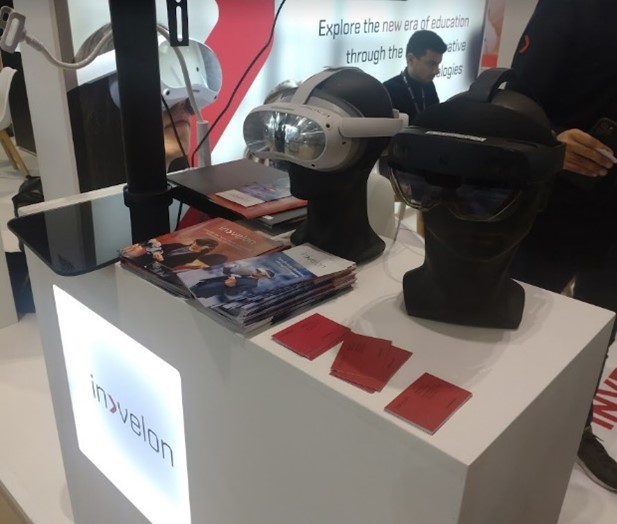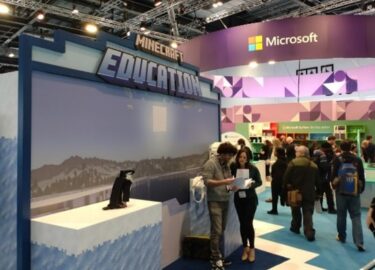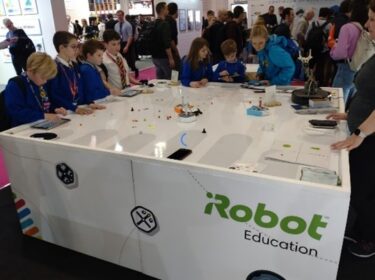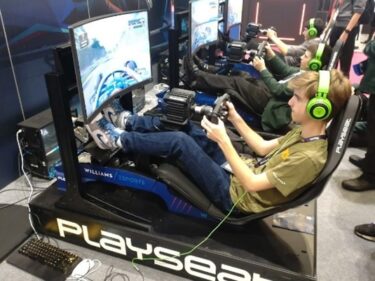Virtual Arena: Educating in a New Reality

The Application of XR into the technology landscape is covered by industry specialist Kevin Williams, in his latest Virtual Arena column – He exclusively attended one of the largest Education and Training conferences, where the latest VR and MR technology was on display.
Author: Kevin Williams
In this latest column for MIXED, we have a chance to see the current state of immersive teaching technology revealed at BETT (previously the British Educational Training & Technology) exhibition in London, supported by the British Educational Supplier Association (BESA). The event attracts some 30,000 educators, governmental, and suppliers to the trade show and conference.
Virtual Reality and Augmented Reality have proven important new technologies previously embraced by many institutions in the teaching and training sector, but the 2023 event was a highwater mark as the validity of the technology was weighed against practical success.
As with VR applied in training and design, the education sector has embraced the key abilities of the technology – some would feel that VR in training and teaching has advanced more in the commercial and consumer side regarding day-to-day use, and BETT’23 reflected this. The applications were broken down into the three areas of remote learning and teaching, school and college multi-user environments, and specialized training.
RedboxVR – a company that has supported the VR teaching and training sector for many years, with their system of classroom deployment of VR. Have been supplying the latest headsets in rugged systems that supports rechargeability and simple deployment. Their two booths at the show, were packed with their VR systems, along with hardware and software from their partners.
Pico Interactive – having a strong presence in the educational scene with their Neo3 and G2 series of headsets, the corporation brought to BETT’23 the latest Pico 4 Enterprise platform. Partnering with Kabuni – who have developed a safe Metaverse for children to lean within a classroom environment, along with platform user Sophia High School – with their online school resource.
Both Redbox VR booths were promoting “Immersive Learning” through the hands-on environment that VR offers teaching; and on these booths played host to several special educational packages. Such as from Showtime VR – offering licensed VR content and management support of a wide selection of headsets, along with their advanced 360 video player for their VR library.
Arbox XR – a management tool from XR devices, managing the deployment of content across these headset platforms. ExpeditionPro – presenting their virtual tour maker platform, allowing to choose from hundreds of already created 360-degree field tips, or create unique classes.
Also on the booth was Bodyswaps – aimed at higher education, and what is called “soft skill training” – the ability to teach people skills, interacting with social and communication traits, VR offering a unique medium for teaching this important skill set. Present was MEL VR Science Simulations – offering over 70 VR lessons and test covering a wide curriculum in the sciences.
On the booth was Ultraleap – their unique ultrasound tracking technology allowing for the replacement of controllers, and able to track the students’ hands placing them within the virtual world as a unique interface. A system able to be connected across a range of VR headsets. While on the Redbox VR and many other booths at the show, Cleanbox presented their ultra-violet light sterilisation solution for headset and controllers. The system actively being used during the events demonstrations.
One of the largest presentations of the technology for learning was on the ClassVR booth – part of Avantis, who have been a pioneer in the application of VR in schools, along with their embedded classroom technology for over twenty years. The company represented on their booth their latest headset, developed to application with their content hub (‘ClassVR Portal’). A headset specially developed from the ground up for education, the whole system offered as a turn-key solution with its own rugged charging and carrying case for deployment in classrooms.
The ClassVR platform has seen deployment in some 20 countries and has been the first experience of VR for many students. The BETT’23 booth was manned not just be sales executives but by actual users – one teacher who has been using the ClassVR platform since the beginning revealed the unique use of the technology in “self-calming” – where students that are finding it difficult in class can use the headset and continue their learning on their own to be less disruptive to the rest of the class and calm themselves.
Other major corporations promoting their platforms in this sector included Intel and Lenovo, sharing a joint booth – they were promoting their Mixed and Virtual Reality Lab initiative. Lenovo with several examples of their Mirage headsets on various booths as well as their own having invested heavily into educational applications of their technology.
As part of their ‘Lenovo VR Classroom’ package for schools, the corporation presented their ‘Uptale’ immersive content creation tool, allowing the creation of VR experiences for 360 videos, and much more. Examples of not just VR but also AR applications in the educational field, with Lenovo’s ThinkReality A3 smart glass platform being demonstrated.
VR content delivery for schools and colleges that have deployed VR into their classrooms has proven a major issue. While many educators jumped on the early bandwagon for VR, the reality has set in that these expensive systems have to start proving their worth, and there are many educational content providers, offering subscription services and a wide selection of teaching environments. Also, the sector needs an agnostic approach to headset support, with attempts by some manufacturers to create walled gardens abandoned.
Providers of these services include Eduverse – offering online environment for students and teachers to explore together – representing the “virtual fieldtrip”, an idea often promoted with VR technology in schools. One such application from their library was demonstrated on their booth was the “Frozen Forest Biome”, that allowed users to navigate round the biome interacting with the unique animals found within the environment, understanding the forest and the threats too it in a learning experience aimed at 8–11-year-old students.
The new concept of the “Metaschool” was being promoted by the International Well Rounded School (IWS) – that have been supplying online student teaching for some time, and who have now ported their content across to VR, offering a remote ability for students to learn.
The use of VR to allow students to experience unique environments also includes the handling of specialist instruments and undertaking difficult procedures. This was demonstrated on the OpenLabs booth that had users taking part in unique scientific procedures in a virtual space, allowing them through trial and error to master the activities in a safe environment.
The international nature of BETT’23 was seen with pavilions representing exhibitors from countries such as Korea, Germany, Spain, France and the UK. On the UK pavilion, the EdTech ecosystem is important to Government investment, and several the exhibitors on this booth deployed VR applications. Metaverse Learning – offered high level training environments, built in collaboration with industry towards effective work skills.
VISR Dynamics – the company offering a virtual environment called ‘Stage’ for multi-user education; an environment that the students can populate and develop themselves. The operation allowing these immersive storytelling environments and teaching spaces created complete autonomy to be shared with other schools and for teachers to even sell their creations.
Also, on the UK pavilion was VRLab Academy – offering some 200 science experiences to train within VR ranging from biochemistry to mathematics and mechanical supported by a online educational platform.
While Xpellore has been created as a metaverse for universities, tutors and students, a central hub of educational resources that can be distributed – but the platform is aimed at high-end experiences, offering a XR streaming platform far beyond the current mobile processors of some of the standalone VR systems. A trend that is growing in many applications of commercial VR is the move to VR or XR streaming supporting the latest wi-fi standards.
On the Spanish pavilion was Invelon Technologies, a developer with a turn-key software solution for developers in both VR and MR, based on helping grow using 4.0 technologies for training. While on the French pavilion booth where Jexplore – a unique content provider, offering career training, with users able to view the actual working conditions and learn more about specific jobs. The company has curated several VR applications that inform the student about various jobs, and through this they can be connected to the company hiring new employees.
Also on the French pavilion was Mima – offering training and support for developers and educators using VR. And on the Korean pavilion the developer GlobalPoint promoted their ‘VRWARE Edu School’ – offering both a learning environment and creative platform for schools.
The application of immersive and interactive digital learning was evident across the BETT’23 exhibition floor. Ranging from the “Esports @ BETT” area of the show, where examples of racing simulators and eSports PC rigs were show that are now being deployed into the education scene.
As well as the use of ‘Minecraft Education’ – a special version of the popular game developed to help teach a new generation part of Microsoft’s outreach in this sector. Along with these the latest robotic teaching systems revealed the future of education, the trade show actively inviting students in school groups to be part of the three-day event.
With over 20-exhibitors at this years’ BETT promoting the application, VR has found a home in the education and training sector, and it will be fascinating to see not only the content created from students in this sector, but also how the hardware will evolve to support the needs of this unique and vibrant aspect of the market.
Note: Links to online stores in articles can be so-called affiliate links. If you buy through this link, MIXED receives a commission from the provider. For you the price does not change.
